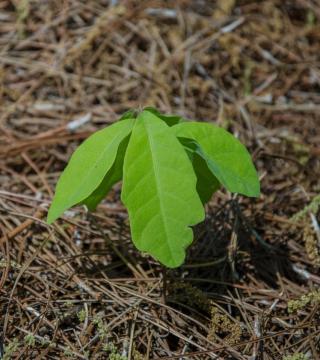Our Native Oak Trees – environmentally, our biggest bang for the buck

Oaks support more life-forms than any other North American tree genus. These large native trees provide food and protection for birds to bears, as well as countless insects and spiders among an enormous diversity of species. With more than 90 individual oak species, their prevalence, size and lifespan help to explain the oak’s power.
Consider a few of the oak’s credentials. Oak trees support 897 caterpillar species in the United States. Of the food eaten by insects, birds and other animals, 75 percent comes from just a few tree groups and oaks lead the list. Birds forage longer in oaks. Fallen oak leaves provide significantly more habitat and nutrition for beneficial organisms. An oak’s canopy and root system are essential for water infiltration, helping rain percolate instead of running off, and purifying it in the process. And, as we are seeing more and more, the large and leafy oak tree is almost unmatched in its ability to capture and store harmful carbon dioxide from the atmosphere.
Douglas W. Tallamy, an entomologist and professor at the University of Delaware has published his most recent findings in “The Nature of Oaks: The Rich Ecology of Our Most Essential Native Trees”. As more and more communities work to bolster climate resiliency, Tallamy encourages the planting (or not removing) oaks as a powerful call to action for individual homeowners and emphasizes the criticality of native oaks in fortifying our ecosystems.
In this March 31 podcast, New York Times’ Margaret Roach interviews Tallamy in “Oaks: The Most Powerful Plant of All”. Click here and scroll a bit down to hear the recording. It’s fascinating!

